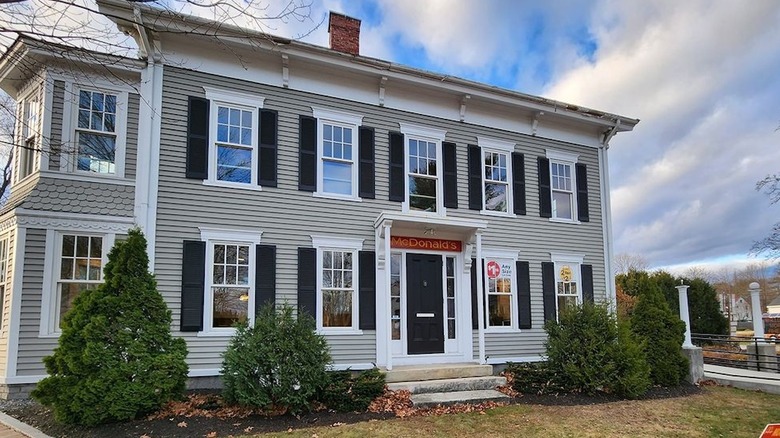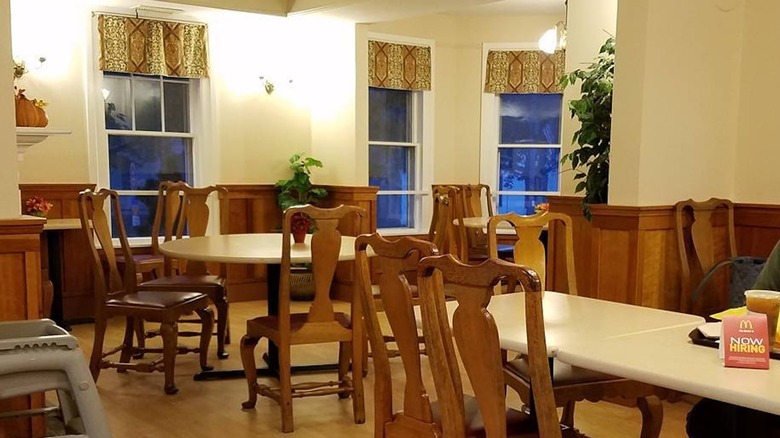McDonald's Restaurants Didn't Meet Freeport, Maine's, Aesthetic, So They Built One In A Mansion
If you can't beat 'em, join 'em — or at least, meet them somewhere near the middle. That's the strategic position fast-food giant McDonald's took four decades ago when the residents of Freeport, Maine pushed back at the chain's interest in sullying their historic streets with the brand's iconic golden arches. After all, the town is home to Jameson Tavern, one of New England's must-visit historic restaurants. It's not that Freeport isn't retail-friendly. In fact, the seaport town is a shoppers' paradise. Anchored by a massive L.L. Bean (the outdoor outfitter's original storefront opened in Freeport in 1912), the town thrives on its reputation as an outlet-shopping mecca. Why then would Freeport residents oppose McDonald's interest in opening a restaurant within walking distance of L.L. Bean's behemoth 22,000-square-foot flagship store?
It all came down to aesthetics. Apparently, residents and governing boards were okay with L.L. Bean's 24-hour operation and landmark 16.5-foot-tall replica of the brand's original Bean Boot, but the installation of McDonald's Golden Arches was taking things just a step too far. Not to be deterred, McDonald's proposed an alternate plan, offering to buy a downtown historic residence and convert it into a fast-food emporium. The building the company had in mind had been constructed in the 1850s by William Gore, a well-to-do local merchant. The idea wasn't an immediate hit with Freeport residents, but with a bit of back and forth, McDonald's plan got the stamp of approval — with a few caveats.
A promise made, a promise kept
While it's unclear what function the Gore House was serving when the property caught McDonald's eye, Freeport residents were hellbent on ensuring the burger giant maintained the structure's historic integrity. Clearly, compromise was necessary to make the deal work: It takes a well-equipped industrial kitchen to turn out McDonald's burgers (which underwent many tweaks in a big upgrade). Negotiations centered on the historic building's exterior and on forward-facing areas like the dining room and signage; the elimination of the brand's signature arches was non-negotiable. Renovations began in early 1984, and the restaurant opened the following December.
Often described as a Victorian mansion, the Gore House is more, well, house than mansion. Maybe a mid-19th-century version of a McMansion? And it's definitely more Colonial Federalist in its simplicity than ornate Victorian. The bottom line is that McDonald's made a promise to respect the building's architectural nature. It wasn't the only time the burger behemoth compromised to meet local standards. Sedona, Arizona made similar aesthetic demands of the chain. At the Freeport location, the fast-food giant kept its promise by incorporating necessary renovations without altering the structure's façade. "What we are doing there is something we probably have never done before in terms of design and the amount of time and effort involved,” a McDonald's representative told The New York Times in 1984. "We are willing to spend the money to make it compatible with the area, the history, the community and the people who live there."

